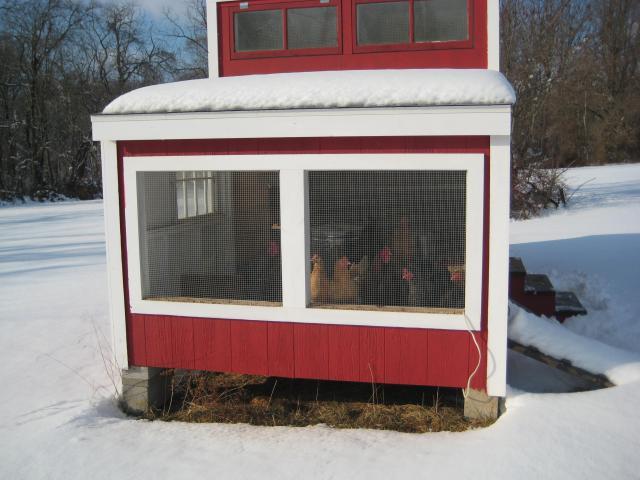I no longer use one. Even on the coldest, dampest days my coop is quite toasty (by comparison to the outdoors). I haven't even bothered to block the vent this winter which I usually do. I have 15 large chickens in a 6x8x8 coop. I only keep cold-hardy birds now and I use DLM. On blustery or icy days, I only open the doggy door for them (otherwise I open the door I use) and they'll go out and perch in the trees that are in the run no matter how cold it gets. Rain, of course, is a different story - then they huddle under whatever shelter they can find or just stay in. I had a lamp break early the previous winter; it had a shatter-proof bulb that shattered after being knocked down from the rafters by chickens flying around in a tizzy. I don't even give supplemental light for egg production anymore after that! If you're reallythat worried about your chickens getting too cold, throw down some extra hay or straw in the nests and on the floor where they can all nestle in and huddle together if they really get desperate. You'd be surprised how much warmer a bit of extra hay/straw can make it - heck, there's a reason they used to use straw to insulate houses!
 "chickens in with the race car"... omg, my hubby would KILL me if I did that! One time last summer one of mine decided not to go home one night... I searched all the usual trees, my toolbox in my garage, everywhere... eventually I found her sitting on my husband's bike with a nice, big poop on his shiny chrome pipes!
"chickens in with the race car"... omg, my hubby would KILL me if I did that! One time last summer one of mine decided not to go home one night... I searched all the usual trees, my toolbox in my garage, everywhere... eventually I found her sitting on my husband's bike with a nice, big poop on his shiny chrome pipes! 


